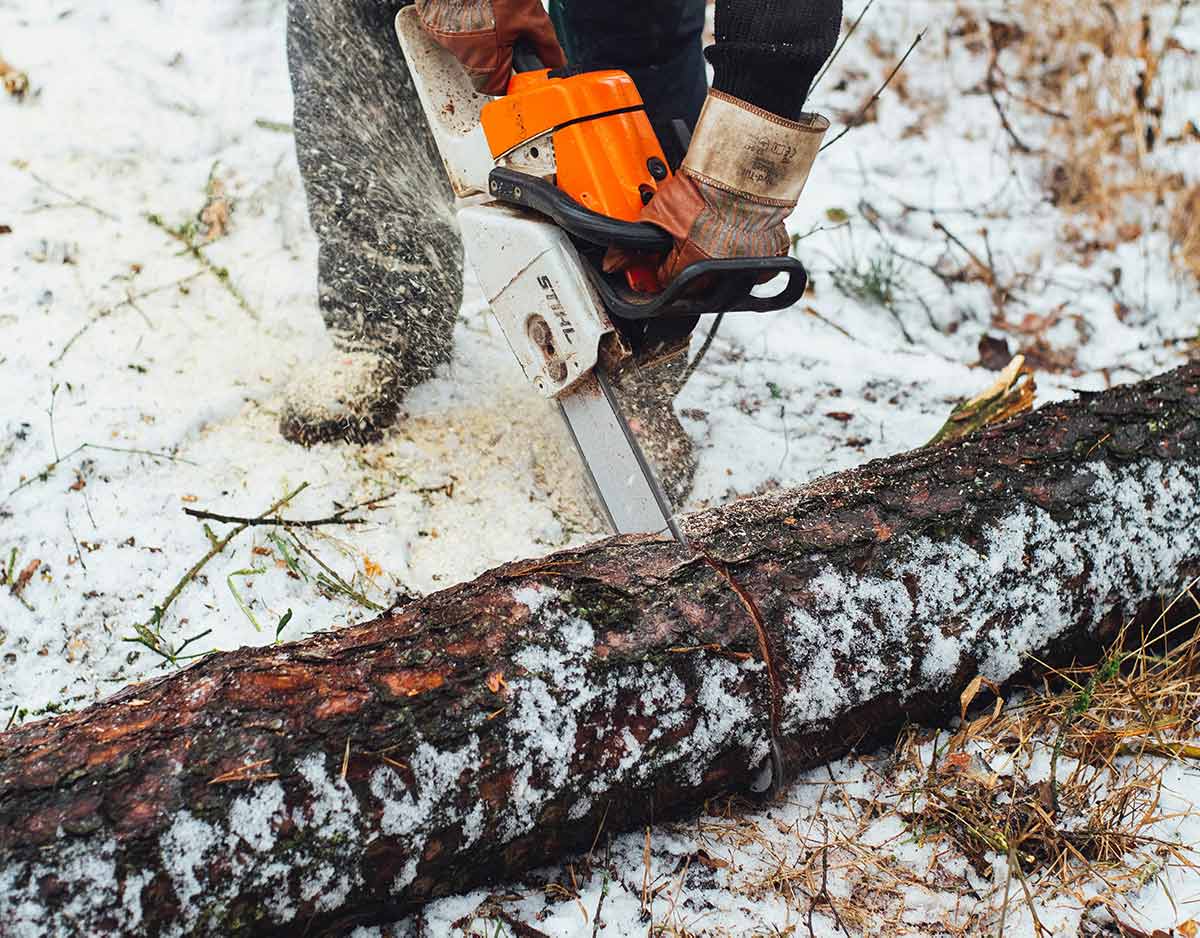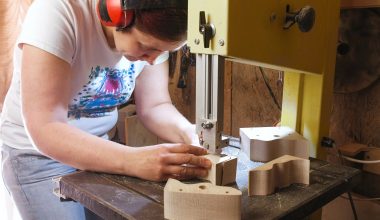It’s time to put your new electric chainsaw to work – but just how do you use it? In this article we’ll discuss how to prepare your equipment and how to cut safely and efficiently. Let’s dive right in!
Before You Start
Protective Clothing
Chainsaws are dangerous tools, and it’s important to make sure you have the correct protective equipment before you start the job. First off, make sure you’re wearing a long sleeved shirt and pants, and don’t have any loose clothing that could get caught. If you have them, overalls are ideal – which is why you see lumberjacks wearing them!
A strong pair of gloves are a must, as are a pair of durable work boots, ideally with steel toecaps. You don’t want a log falling on your toe! Ear defenders are still a great idea, even with an electric saw, because it can get a bit noisy.
Finally, a proper facemask is essential when working with a chainsaw. On a basic level, it’s hard to see what you’re doing when you’re showered in wood chips. You also need to be careful of debris getting caught in your eyes. The best masks have an integrated helmet (also a good idea), and cover your entire face with a transparent plastic shield.
Preparing Your Saw
If you’re using a cordless electric chainsaw, it goes without saying to make sure your batteries are charged. If you’re using a corded saw, make sure you have a clear and obstruction free run for the cable. It’s surprisingly easy to kink it or tug it while you are working – preparation is key.
Next, make sure you saw oil is topped off. You need to use designated chainsaw oil – which is designed specifically for lubricating chainsaw chains. Most saws these days auto-lubricate, but if yours does not, make sure you regularly lubricate the chain.
Check Chain Tension
Next up, check the tension on your chain. As you use your chainsaw, the chain will stretch, causing it to loosen on the bar. As it stretches, you need to adjust the tension to compensate.
Typically, this is done by first loosening the bar, and then turning the tightening screw. The system will differ from machine to machine, but you should tension the chain until you can just lift it off the bar. It shouldn’t be tight against it, you should be able to see 5mm of daylight under the chain when you lift it off the bar. If you aren’t sure, consult the manual.
After you have tensioned it correctly, tighten the bar back down to secure it.
Cutting Techniques
Now you are ready to start cutting! Let’s go over some of the do’s and don’ts to avoid hurting yourself. Remember, if in doubt, don’t do it! It’s very easy to get carried away with the chainsaw and do a dangerous cut. Instead, you should stop, rearrange the wood in a safe manner, and then continue. Accidents can be extremely serious. It goes without saying, but if you have no experience with a saw, it might be a good idea to organize a lesson with a professional.
What Not To Do
Let’s quickly discuss some simple tips to avoid common issues. First off, always stand to the left of your saw, with a strong, stable stance. If the saw kicks back at you, it should pass to one side of you rather than hitting you.
Never cut more than one thing at a time. Stacking logs can seem like a good idea to save time, but the log and the saw can get thrown back at you. Also, only cut wood with your saw!
Never cut above your shoulders, and wherever possible, try to secure whatever you are cutting. Putting a foot on a log can help, but it’s best to work your way down a tree trunk rather than separating it up first. That way, the large part of the tree is stable while you lop off small logs.
Finally, never cut with the tip of your saw. This can result in the saw kicking back at you – which is extremely dangerous – for obvious reasons!
Cutting Logs
When cutting up logs, make sure you secure the log. You can do this by using a sawing aid, or sometimes by using your foot against the log. With the saw at full speed, cut the log using the middle of the cutting bar, applying firm but not hard pressure. Let the chain do the work – don’t try to force it. As you reach the end of the cut, apply less pressure so the saw doesn’t shoot out the bottom of the log.
Cutting Branches
As a general rule, don’t cut branches that are still in a tree, unless you are very experienced. It’s best to wait for them to fall down, or call a tree surgeon. Adding a ladder and an unstable position into your chainsaw routine opens up a world of potential for accidents.
Once on the ground, we like to work our way along the branch trimming off secondary branches first. Once complete, you can work your way along the main branch, cutting it into small logs.






